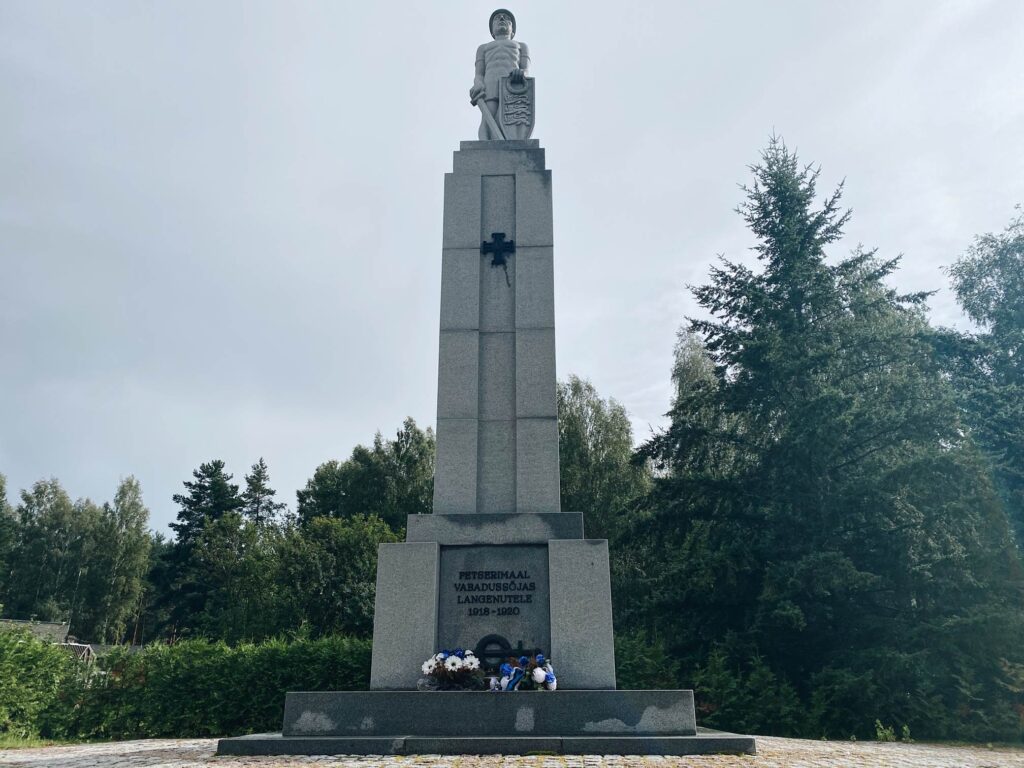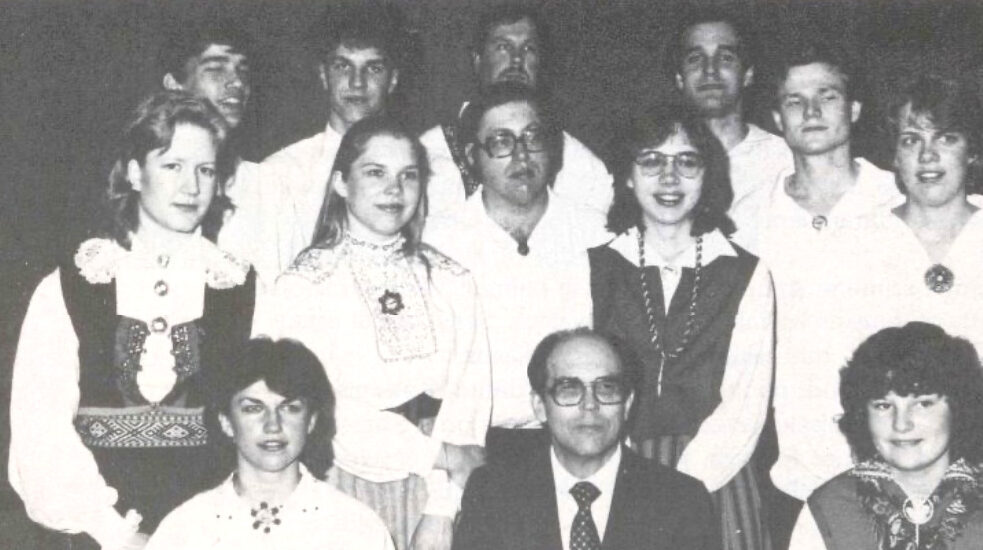
However, the existence of the Värska monument prompts us to consider Setomaa’s connection to Estonia, particularly how the region was first integrated into Estonia in 1920.
Before 1920, Setomaa had developed separately from the rest of present-day Estonia, which until then had been divided between the administrative provinces of Estland and Livland. Even when the Russian Empire incorporated Estland and Livland, the two provinces developed separately from Setomaa. Indeed, throughout most of the nineteenth century Estland and Livland experienced a certain level of autonomy over local matters. This autonomy, the historical heritage of Medieval Livonia, and the German and Lutheran influences strengthened the provinces’ differences from Setomaa and other nearby provinces integrated into Russian principalities.
The early 20th century saw the first instances of calls for the unification of Setomaa with the Estonian-speaking regions. Estonian intellectuals in the mid-nineteenth century played a key role in showcasing Seto folklore as essential to understanding Estonian folklore overall, thereby popularizing Seto culture among Estonian audiences. These perceptions of Seto culture related to linguistic and cultural similarities formed the foundation for the unification arguments in the 20th century. This can be observed in the first tangible step toward Estonian unification in 1917. Following the February Revolution, the Russian Provisional Government established the Governorate of Estonia, an autonomous unit primarily populated by Estonian speakers. The governorate encompassed the former province of Estland, areas of Livland to the south, and Narva in the northeast. This newly established Governorate of Estonia was to remain within the framework of a reconstituted Russian Federation, and its autonomy remained ambiguous. Nevertheless, this initial unification of Estonian-speaking territories represented a significant achievement for territorial reorganization based on ethnolinguistic claims and set the groundwork for the territory of independent Estonia.
… the petition noted that the 20,000 Estonians in Setomaa did not speak Russian and would benefit from integration into Estonia, as this would facilitate the establishment of Estonian language schools… Contrary to the petition’s claims, it is important to differentiate between “Setos” and “Estonians” in this context.
The first step towards autonomy was also significant for Setomaa, as it set a precedent for its unification based on ethnolinguistic claims. Consequently, a group of representatives from around Petseri petitioned the Estonian provisional government to annex their region to the newly formed Estonian governorate. This petition, titled “Petition of the Estonians of Petserimaa, or Setukes, on July 1, 1917, regarding unification with Estonia,” aimed to redraw the border between Estonia and the Pskov Governorate. As shown by its title, the petition’s main argument emphasizes the linguistic and cultural connections between Setos and Estonians by equating the two groups. For example, the petition noted that the 20,000 Estonians in Setomaa did not speak Russian and would benefit from integration into Estonia, as this would facilitate the establishment of Estonian language schools and allow the region's inhabitants to “catch up” to the level of Estonians across the border. Contrary to the petition’s claims, it is important to differentiate between “Setos” and “Estonians” in this context.
Indeed, more recent Estonian immigrants to Setomaa had developed their own sense of Estonian national identity and did not assimilate into the traditional Seto way of life. Such was the case of one of the petition’s signatories, Alfred Meomuttel. Despite his role as the Commissioner of Petseri, Meomuttel was not a Seto. He was born near Fellin (Viljandi), studied in Tartu, and only moved to Petseri after 1913. Although little is known about the other petition signatories, Meomuttel’s background complicates our understanding of the petition as solely a reflection of Seto self-identification.
Yet, ethnolinguistic arguments were not sufficient to determine the border of the future Estonian state. As the Estonian Provisional Government sought to secure Estonian independence, it had to adopt historical, military, and economic arguments to prove its viability and thus challenge Western reluctance to recognize small states. The Memorandum of the Estonian Delegation to the Paris Peace Conference in 1919 illustrates this shift. The memorandum used ethnolinguistic arguments to emphasize the homogenous character of the population in the territory that was to become Estonia. However, these claims were undermined because the memorandum could not present the territory in question without ambiguity, notably when the territory presented as Estonia included areas east of Pskov, which the memorandum describes as a strategic border for the defence of the state, but which also included a significant proportion of Russian speakers.
In the aftermath of the Paris Peace Conference, Western support for Estonian independence remained limited. Western powers hoped to preserve Russia’s unity but refused to engage in the division of its territory without consent. Therefore, the Estonian government directly negotiated with Soviet Russia and signed the Tartu Peace Treaty on February 2nd, 1920. The treaty recognized Estonia’s independence and settled the borders between the two states, with Russia renouncing all rights of sovereignty over Estonian territory. Here, security concerns overrode ethnolinguistic arguments. For example, the Estonian leadership advanced claims to the territory around Izbork to gain a defensible border against Russia. Moreover, Estonia’s military position in Setomaa at the time proved a more effective claim in determining the definitive border during the negotiations. Nonetheless, ethnolinguistic arguments maintained their importance. Indeed, the Estonian government emphasized the long-term Estonian presence around Petseri to secure the integration of Setomaa.
Integrating Setomaa into the newly established Estonian state represented a complex process that involved defining the borders of a territory that had never existed before. Estonian national elites initially argued for the new state’s borders based on ethnic and linguistic closeness. However, as independence became a more concrete goal, these same elites had to adjust their arguments and consider pragmatic elements to secure the state’s borders. Following the Second World War, Russia employed similar ethnolinguistic arguments to dismiss the Tartu Peace Treaty and redefine the border between Estonia and Russia, thus beginning the ongoing division of Setomaa.
Anna Herran is a history PhD candidate at the University of Toronto interested in the interactions between memory, identity, and history in Central and Southeastern Europe and the Baltic states. Her current research compares Estonia's and Czechoslovakia's first experiences of statehood during the interwar period. Outside academia, she enjoys ice skating, attending film festivals, and closely following the Eurovision Song Contest.



